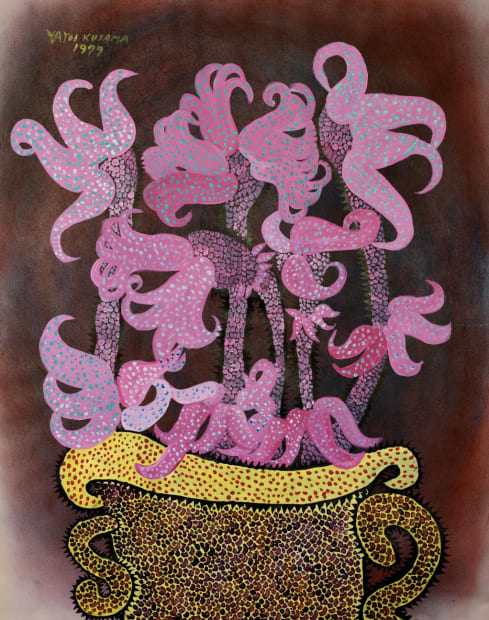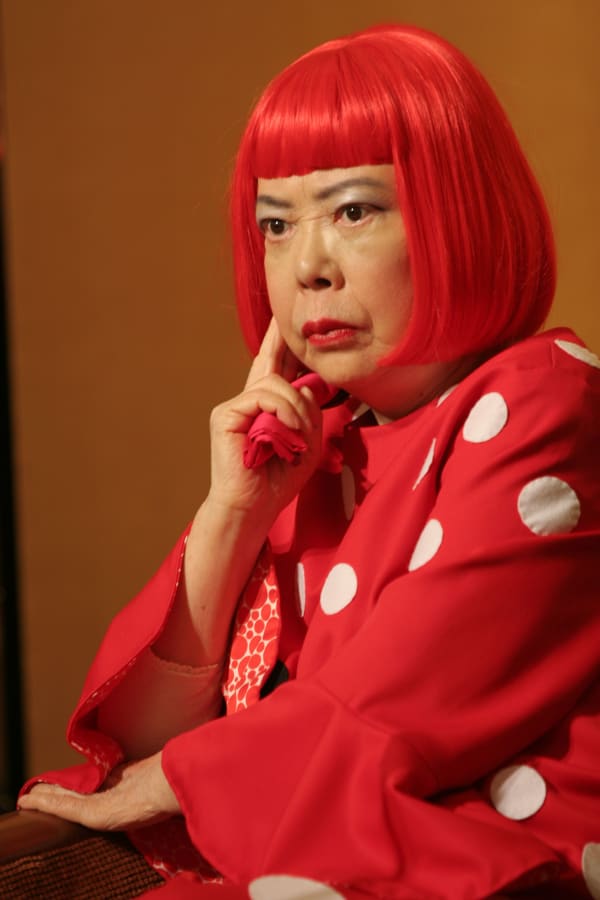-
 Yellow Vase, 1979Acrylic, watercolour and ink on paper, 62.5 × 50.7 cm (24 5/8 × 20 in.)© Yayoi Kusama. Image reproduced for educational and informational purposes only.
Yellow Vase, 1979Acrylic, watercolour and ink on paper, 62.5 × 50.7 cm (24 5/8 × 20 in.)© Yayoi Kusama. Image reproduced for educational and informational purposes only. -
“I translate the hallucinations and obsessional images that plague me into sculptures and paintings.”
– Yayoi Kusama
Through works like Yellow Vase, Kusama demonstrated how her practice turned everyday objects into vehicles for exploring inner states. The familiar form of the vase is reimagined through obsessive detail and layered media, suggesting that even the most ordinary subjects could hold symbolic weight when filtered through her unique vision. This transformation reflects her broader philosophy: that art was both a response to and a release from her lifelong psychological struggles.



